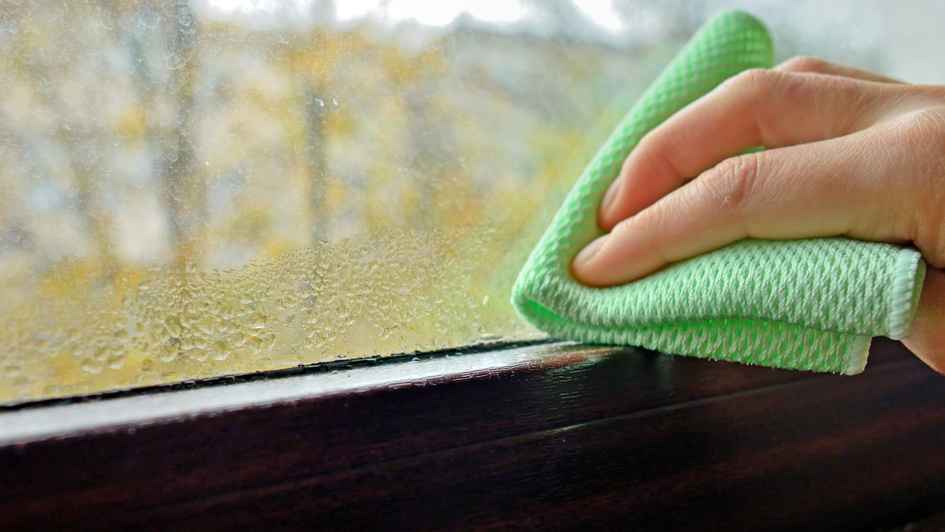
The windows of your home are a gateway to the outdoors, a way to allow light in when you take in the view of your garden, yard or scenery. The last thing you want to see is a sweaty window covered in a film of condensation.
Not only are windows covered in condensation unappealing, they also can be a sign of a larger air-quality problem in your home. Fortunately, there’s multiple things you can do to resolve the problem.
What Causes Sweating along Windows
Condensation on the inside of windows is created by the damp warm air in your home mixing with the colder surface of your windows. It’s notably prevalent over the winter when it’s much colder outside than it is inside your home.
Inside Moisture vs. In Between Panes
When talking about condensation, it’s necessary to know the distinction between moisture on the inside of your windows compared to moisture in between the windowpanes. One is an indoor air quality issue and the other is a window issue.
- Moisture within a window is created from the warm humid air in your home collecting along the glass.
- Any moisture you see between windowpanes is formed when the window seal fails and moisture seeps between the two panes of glass, and at that point the window has to be repaired or replaced.
- Condensation inside the windows isn’t a window problem and can instead be solved by fine-tuning the humidity in your home. Different things cause humidity throughout a home, like showers, cooking, laundry or even breathing.
Why Condensation on Windows Could Mean Trouble
Although you might presume condensation on the inside of your windows is a cosmetic concern, it may also be a sign your home has higher humidity. If this is in fact the case, water may also be condensing on window frames, cold walls or other surfaces. Even a thin film of water can encourage wood surfaces to mildew or rot over time, increasing the growth of mildew or mold.
How to Decrease Humidity Throughout Your Home
Thankfully there are numerous options for extracting moisture from the air inside your home.
If you have a humidifier running in your home – whether it be a smaller unit or a whole-house humidifier – lower it further so the humidity inside your home goes down.
If you don’t have a humidifier active and your home’s humidity level is higher than you prefer, consider purchasing a dehumidifier. While humidifiers introduces moisture into your home so the air doesn’t become too dry, a dehumidifier extracts excess moisture out of the air.
Smaller, portable dehumidifiers can absorb the water from an entire room. However, these units require clearing water trays and most often service a small area. A whole-house dehumidifier will extract moisture from your entire home.
Whole-house dehumidifier systems are managed by a humidistat, which permits you to establish a humidity level just like you would pick a temperature with your thermostat. The unit will begin running instantly when the humidity level surpasses the set level. These systems collaborate with your home’s HVAC system, so you will want to contact qualified professionals for whole-house dehumidifier installation West Valley City.
Alternative Ways to Reduce Condensation on Windows
- Exhaust fans. Adding exhaust fans near humidity hotspots including the bathroom, laundry room or above the kitchen range can help by drawing the warm, humid air from these rooms out of your home before it can raise the humidity level across your home.
- Ceiling fans. Spinning ceiling fans can also keep air swirling throughout the home so humid air doesn’t get caught up in one place.
- Open window treatments. Opening the blinds or drapes can decrease condensation by stopping the damp air from being stuck against the windowpane.
By reducing humidity across your home and circulating air throughout your home, you can make the most of clear, moisture-free windows even during the winter.

